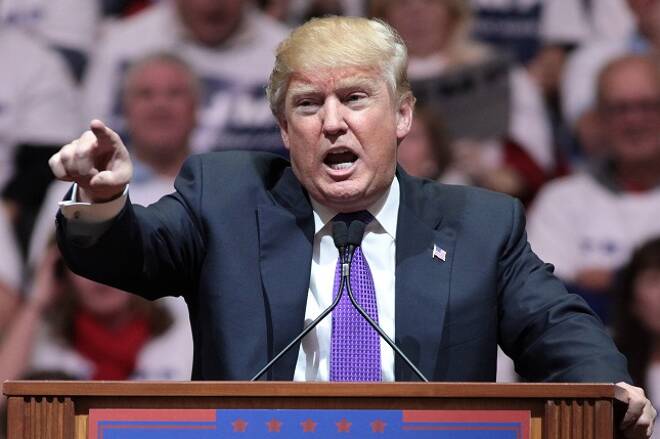Advertisement
Advertisement
Trump Effect May Pressure RBA to Raise Rates in 2017
By:
It was bound to happen. The Donald Trump Effect has jumped the Pacific Ocean and landed in Australia. After enjoying several years of record low interest
It was bound to happen. The Donald Trump Effect has jumped the Pacific Ocean and landed in Australia. After enjoying several years of record low interest rates, Australian home buyers are quietly facing rising rates for investor loans. Fixed term rates have also been rising recently so it will just be a matter of time before the banks target variable rates across all home loans. In my opinion, rising bank rates will eventually pressure the Reserve Bank of Australia to raise rates in 2017.
Overseas banking experts are blaming the Donald Trump Effect for the rising mortgage rates in Australia. Trump’s plans to spend hundreds of billions on infrastructure in addition to cutting taxes have pushed up the yields on long-term Treasury debt. And since the U.S. Treasury market is the benchmark for the rest of the world, borrowing costs are being pushed up all around the world.
Essentially, rising Treasury yields are pushing up borrowing costs in the capital markets and banks are being forced to pay up for their major source of funding after enjoying many years of extremely low rates. This is the essence of the global economy where long-term rates in the U.S. actually have an effect on local rates, thousands of miles away.
Along with deposits, Australian banks fund themselves in the international capital market, essentially borrowing from other banks. When their costs of borrowing go up, they are forced to pass this cost along to the consumer.
Additionally, Australia banks are feeling the heat from their domestic regulator, APRA. This regulatory agency is requiring the banks to hold more capital as a buffer against any banking industry shock. And where do the banks get the capital they need if deposits aren’t sufficient? They tap the international capital market.
Australian banks are facing the difficult decision to raise interest rates because they are also facing difficult decisions themselves regarding increases in funding costs and their regulatory obligation to manage a balance portfolio.
It may be a little early to predict when the RBA will raise rates in 2017, but it’s not too early to react to the movements in the markets if you are an investor or a borrower. There is opportunity to play the speculative markets if you are an investor and see a trend developing. And if you are a borrower, you can avoid paying up later if you lock in rates now or at least take advantage of some of the bargain rates that are still being offered by the lenders. In this case, it really pays to shop around.
Helping to support an RBA rate hike in 2017 were published comments from the Organization for Economic Development and Cooperation (OECD). It recently suggested tightening by the Reserve Bank of Australia “is appropriate” in 2017 because of “likely monetary policy develops elsewhere, the cyclical development of the domestic economy and the need to unwind tensions from the low-interest environment, notably in the housing market, which has in many places experienced rising prices for some time”.
To be fair, the recent RBA minutes suggest the central bank is more concerned about the labor market at this time than a rate hike, but all one has to do is look at the rapid change that took place in the U.S. Treasury market in just the last 30 days. Conditions could change fast because Trump’s inauguration date in January is rapidly approaching and then he may be controlling the steering wheel of global interest rates.
About the Author
James Hyerczykauthor
James is a Florida-based technical analyst, market researcher, educator and trader with 35+ years of experience. He is an expert in the area of patterns, price and time analysis as it applies to futures, Forex, and stocks.
Latest news and analysis
Advertisement
